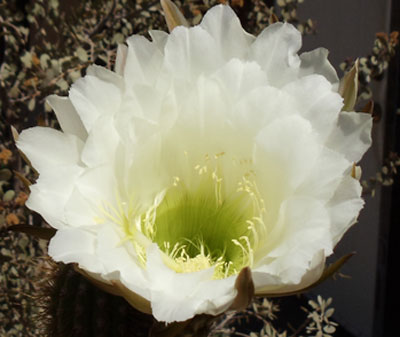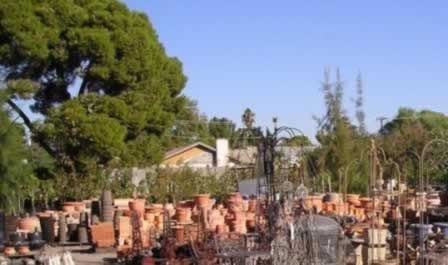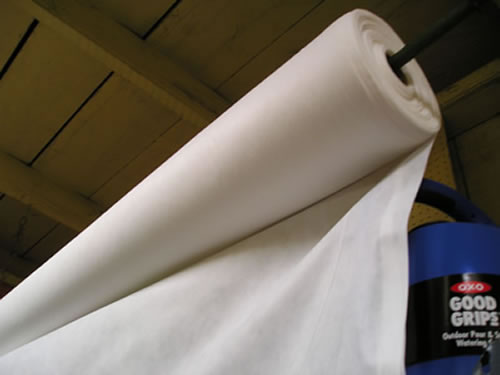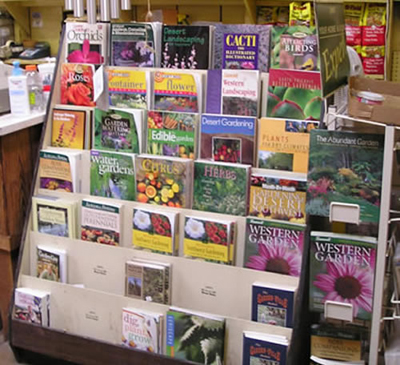The following information is provided by: Maricopa County Extension Service
1. What plants are low water use? Low water use plants are often called xeriscape plantings . Many nurseries have information on low water use plants for your area.

The State of Arizona has recommended plant low-water plant lists for the Tucson and for Maricopa urban areas. Check the xeriscape page above for these (and other) specific plant listings.
2. How do you get rid of the white stuff on a clay pot? The white stuff is actually salt deposits which occur when water evaporates. Some people like that look!

3. How do you protect against frost in the Low Desert? Most citrus fruit will not freeze unless temperatures drop into the mid 20's or lower for at least two hours. Lemon's, Limes and other thin-skinned fruit on the upper and outer periphery of trees may receive some injury at about 28 degrees.

Plant frost sensitive plants in the warmer microclimates of your yard, on the South or West sides, up next to a block wall which will capture and store heat energy from the sun.
Wrap the trunks of young citrus and other cold-tender trees to protect them from the frost. These wrapping may be left on during the frost season.
Cover the canopy of trees with a sheet or blanket (not plastic) that extends all the way to the ground. Apply covering by sunset to capture the radiant heat trapped during the day. Remove the covering every morning and reapply at night if frost is forecast.
Keep trees properly irrigated as drought stress makes them more vulnerable to frost damage.
If necessary hang an outdoor light just off the ground, well away from the trunk, under the blanket to provide additional heat.
Do not prune frost damage out until new growth has started in the Spring. Pruning stimulates new growth and you do not want to encourage any vulnerable new growth until all danger of frost has passed. The damage often appears much worse than it is. What appears to be dead may actually sprout new leaves in the Spring. By pruning before Spring you may cut away much more than is necessary.
The frost damaged material provides some frost protection to the rest of the plant by creating a "dead air space" which insulates the tree.
4. How do I learn more about gardening? It depends! How much do you want to learn, what type of gardening do you want focus on, or what are the best methods for you learn.

Looking in the home gardening section will give you some ideas. Be sure to look at the newspaper articles prepared by the University of Arizona Cooperative Extension offices in Tucson and Phoenix.
Of course there are many books available, and your problem will be more directed at selecting the good and useful ones rather than trying to find a book. You might visit your county Master Gardener programs for specific advice, or attend one of their workshops.
5. How do I control weeds? There are many possible answers to this question.
6. How do I control pests? Pests include insects, disease producing organisms, and weeds. This information focuses on insects.

7. Should I fertilize and water my outdoor plants during the winter? Fertilizing of trees and shrubs during the winter in the High Desert should not be done. Fertilizer could stimulate plants to come out of dormancy, start new growth and winter damage could occur. These plants are "resting" above the ground but do have activity in the roots if soil temperatures are warm. Normally trees and shrubs that go into winter with adequate soil moisture do not need watering during the winter. Usually winter rains or snow provide enough water.
We recommend feeding citrus 3 times per year: February, June, and October.
Deciduous plants do not need much water because the leaves, where transpiration occurs, are gone and nutrients needed for growth are not required because there is no shoot growth. The same holds true for most evergreen plants. When the air temperatures are cold and sunlight is reduced, why grow? However, if winter moisture is not sufficient to keep the roots moist they will die. If no winter moisture occurs for four to six weeks then water.
8. When and how do I prune? Pruning is an important way to maintain your plants. Selected answers to how and why to prune are listed below.
Pruning (Details of how and how, examples of trees - from Master Gardener Manual).

9. How much do I water? It depends! On the type of plant, where you are located, the weather, and the microclimate around your house. Here is a guide you can use.
10. When can I plant and when do I do it? Just like in other geographic areas, some plants are better planted at certain times or will only survive at specific seasons. It varies by elevation and weather conditions. Take time to learn the plants that are best for your area by visiting nurseries, arboretums, or other public displays of locally adapted plants.

Planting calendar for Annual Fruits and Vegetables
You can look up some selected plants or different elevations or climatic factors , or specific planting dates.
You may want to review more detailed information that pertains to different aspects of planting in the arid southwest.

